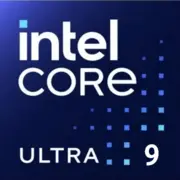Intel Core Ultra 9 185H

Intel Core Ultra 9 185H: Hybrid Power for Future Laptops
March 2025
Modern laptops require a balance between performance, battery life, and compactness. The Intel Core Ultra 9 185H (Meteor Lake) is one of Intel’s first hybrid chips, combining high speed and energy efficiency. Let’s explore who it is suitable for, how it performs under real tasks, and what to consider when choosing a device.
Architecture and Process Technology: A New Era of Hybrid Computing
The Meteor Lake processor is built on a 7nm process technology (Intel 4) and uses hybrid architecture with three types of cores:
- 6 Performance-cores (P-cores) with a frequency of 3.9–5.1 GHz for resource-intensive tasks.
- 10 Efficient-cores (E-cores) for background processes and energy savings.
- 2 Low Power E-cores in a separate module for minimal energy consumption in standby mode.
With a total of 16 cores and 22 threads, this configuration allows for task distribution among the cores, preventing overload. For example, during video rendering, the P-cores handle the main workload, while the E-cores manage background applications.
The integrated Intel Xe LPG 128EU graphics is an evolution of Iris Xe. It supports DirectX 12 Ultimate, Ray Tracing, and AV1 decoding. In games like Cyberpunk 2077 at medium settings (1080p), the iGPU delivers 35–40 FPS, and there’s enough power for smooth playback during 4K video editing in DaVinci Resolve.
24 MB L3 cache speeds up data processing, which is critical for AI tasks and complex computations.
Power Consumption and TDP: Balancing Power and Efficiency
The processor’s TDP is 45W, but thanks to architectural optimization, real consumption drops to 10–15W for office tasks. In turbo mode (up to 5.1 GHz), the chip briefly consumes up to 80W, but the laptop’s cooling system must handle this.
For comparison:
- AMD Ryzen 9 7940HS (45W) — similar TDP, but higher thermal output under load.
- Apple M3 Pro (30W) — lower consumption but limited compatibility with Windows software.
Tip: In thin laptops (e.g., Dell XPS 15), the processor operates at reduced frequencies to minimize heating, while in gaming models (ASUS ROG Zephyrus), it reveals its full potential.
Performance: From Office to 4K Rendering
Geekbench 6:
- Single-Core: 2047 — quick response in browsers, Excel with spreadsheets of 100,000 rows.
- Multi-Core: 11274 — rendering a 3D model in Blender takes 8 minutes compared to 12 minutes with the Ryzen 9 7940HS.
Real-World Scenarios:
- Office: Simultaneous work with 50+ tabs in Chrome, Zoom, and Photoshop — no lag.
- Gaming: Shadow of the Tomb Raider (1080p, high settings) — 65 FPS with discrete RTX 4060.
- Turbo Mode: Battery life reduces by 20-30%, but speed increases by up to 40% (for example, exporting video in Premiere Pro speeds up from 10 to 7 minutes).
Issues: Under extended load (more than 30 minutes), throttling may occur in ultrabooks due to compact cooling.
Use Cases: Who Needs the Ultra 9 185H?
1. Professionals: Video editors, programmers, CAD engineers. For instance, rendering a project in AutoCAD takes 15% less time than with Core i9-13900H.
2. Gamers: Paired with an RTX 4070-level GPU, the laptop can handle Alan Wake 2 at ultra settings in 1440p.
3. General Users: Smooth multitasking and long battery life (up to 10 hours in reading mode).
Who it’s not for:
- Budget users (laptops with this CPU start at $1700).
- Those who only need basic tasks (Core i5 is sufficient for Netflix and Word).
Battery Life: How Long Will the Battery Last?
Under moderate load (office + YouTube):
- A laptop with an 83 Wh battery works for 8-9 hours.
Power-saving technologies:
- Intel Dynamic Tuning 3.0: Automatically switches cores to save charge.
- Disabling Low Power E-cores in sleep mode reduces power consumption to 1W.
Comparison:
- MacBook Pro 16" (M3 Pro) — up to 18 hours, but only for macOS applications.
- ASUS ZenBook Pro 15 (Ryzen 9 7940HS) — 6-7 hours under similar conditions.
Comparison with Competitors
1. AMD Ryzen 9 8940HS (Zen 4, 4nm):
- Pros: Better price (laptops starting at $1500).
- Cons: Weaker iGPU (Radeon 780M vs Xe LPG).
2. Apple M3 Pro (3nm):
- Pros: Record battery life.
- Cons: Does not support CUDA and some professional software.
3. Intel Core i9-14900HX (Raptor Lake):
- Pros: Higher frequency (up to 5.8 GHz).
- Cons: TDP 55W — more noise and heat.
Pros and Cons of the Core Ultra 9 185H
Strengths:
- Best-in-class multi-threaded performance.
- Powerful integrated graphics.
- Support for Wi-Fi 7 and Thunderbolt 5.
Weaknesses:
- High cost of laptops (starting at $1700).
- Possible overheating in ultrabooks under load.
Recommendations for Choosing a Laptop
1. Type of Device:
- Ultrabook (LG Gram 17, $1800): Focus on battery life and weight.
- Gaming (MSI Stealth 16, $2200): Powerful cooling and discrete graphics.
- Workstation (HP ZBook Fury 16, $2500): Support for ECC memory and ISV certification.
2. What to Look For:
- Cooling System: At least 2 fans and heat pipes.
- Display: For creative work — 4K OLED with 100% DCI-P3 color coverage.
- Memory: 32GB DDR5 — minimum for rendering.
Final Conclusion
The Intel Core Ultra 9 185H is a processor for those who are not willing to sacrifice performance for mobility. It is ideal for:
- Professionals working in "field conditions."
- Gamers who value portability.
- Those looking for a "universal" laptop for the next 4-5 years.
Alternatives: If maximum battery life is needed — choose Apple M3 Pro; if the budget is limited — go for AMD Ryzen 9. However, for the Windows ecosystem, the Ultra 9 185H remains the best choice in 2025.
Basic
CPU Specifications
Memory Specifications
GPU Specifications
Benchmarks
Compared to Other CPU
Related CPU Comparisons
Share in social media
Or Link To Us
<a href="https://cputronic.com/cpu/intel-core-ultra-9-185h" target="_blank">Intel Core Ultra 9 185H</a>

